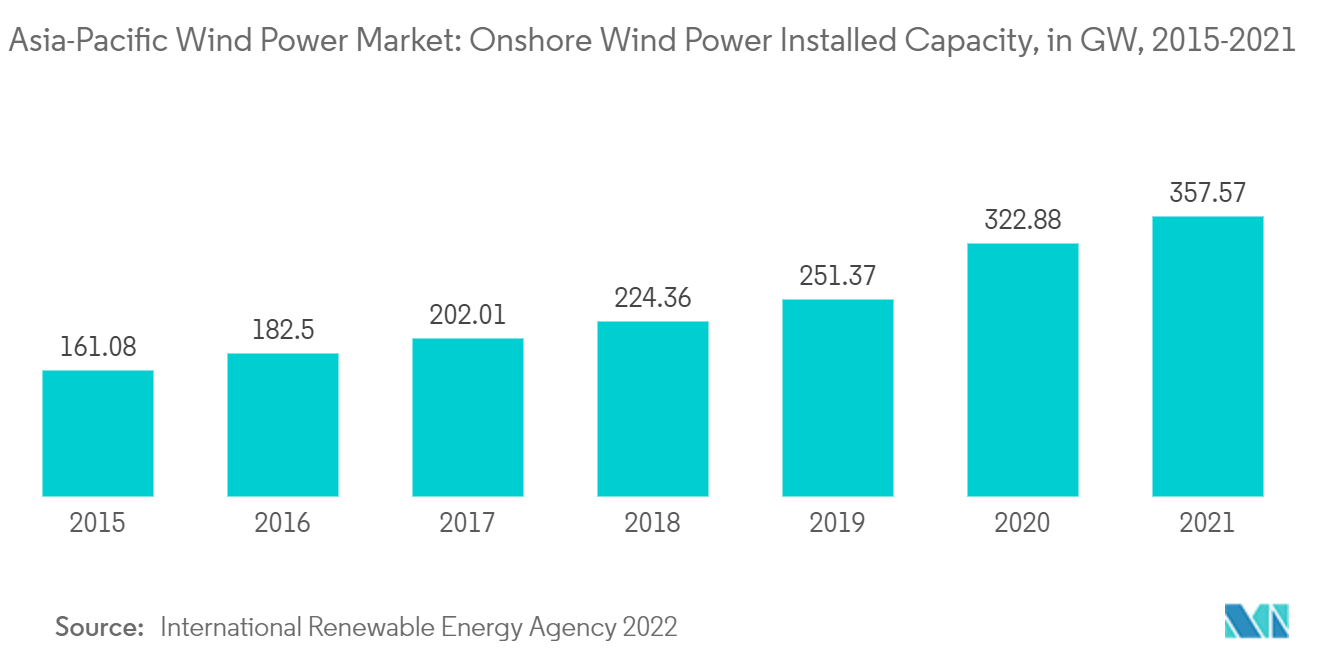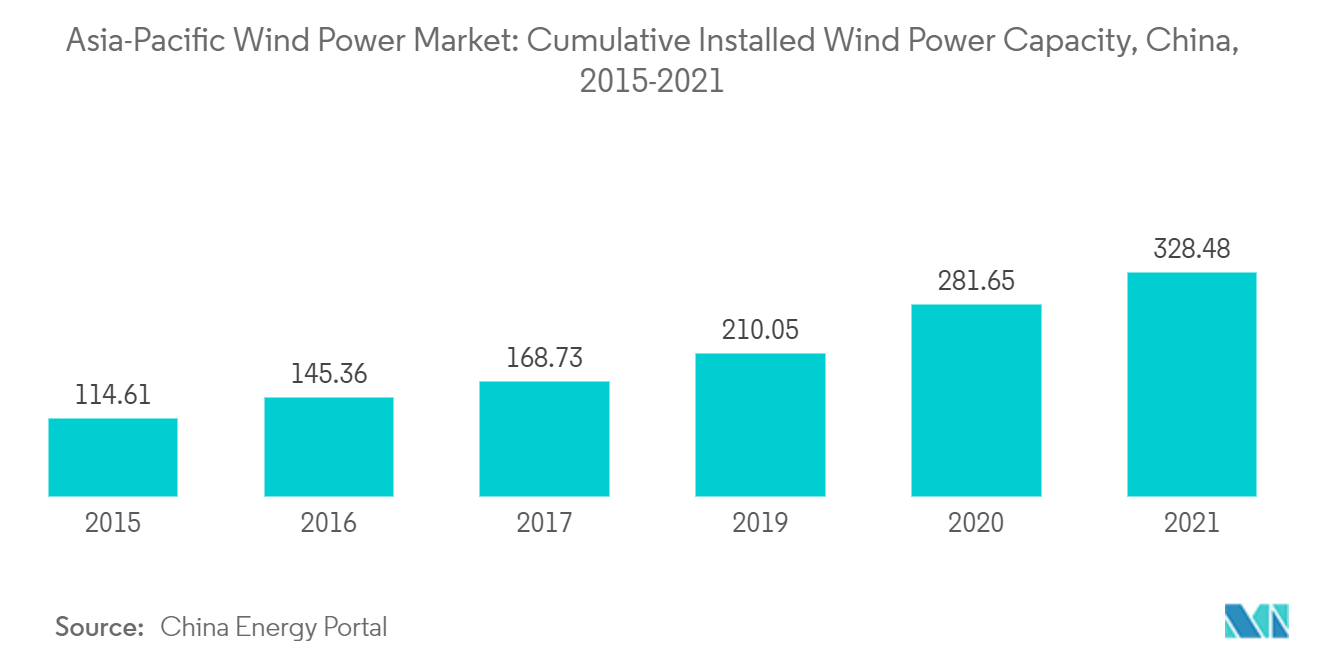Market Trends of Asia-Pacific Wind Power Industry
This section covers the major market trends shaping the APAC Wind Power Market according to our research experts:
Onshore Segment to Dominate the Market
- Over the last five years, onshore wind power generation technology evolved to maximize electricity produced per megawatt capacity installed to cover more sites with lower wind speeds. Besides this, in recent years, wind turbines have become larger with taller hub heights, broader diameters, and larger wind turbine blades.
- In 2021, Asia reached 357.574 GW of onshore wind energy installations. New installations in Asia are likely to exceed 10 GW in 2026 and reach nearly 15 GW by 2030. By 2050, Asia is projected to increase new wind power installations by nine folds, totaling 613 GW of offshore and 2,646 GW of onshore wind power.
- Going ahead, China's northern regions have abundant onshore wind potential. The provinces of Qinghai, Xinjiang, Inner Mongolia, and the country's northeast have the highest power density (average values between 400 and 600 watts per square meter (W/ m²)), and most new onshore installations are expected to be deployed in these areas.
- Moreover, in November 2022, Vestas Wind Systems A/S won a 21 MW order with wpd AG in Taiwan that includes the supply of five V117-4.2 MW wind turbines with 91.5m towers in two wind projects. The order also includes a long-term service agreement for the wind farms to ensure optimized performance.
- Furthermore, in December 2022, TagEnergy, and Vestas has announced a partnership for delivering Engineering Procurement and Construction services for the first stage of Golden Plains Wind Power Plant, a 756 Megawatt project in Victoria, Australia. Upon completion, Vestas will deliver a 30-year service and maintenance agreement to optimize the project's energy production.
- From all these factors, it can be concluded that the onshore segment is expected to gain significant traction in the market in the coming years and is expected to be the fastest-growing segment.

China to Dominate the Market
- In China, nearly 70% of the electricity produced is from thermal sources of energy. Owing to the increasing pollution from thermal sources, the country has been making efforts to increase the share of cleaner and renewable sources in power generation.
- According to China Energy Portal, during 2014-2021, China's total installed wind capacity registered a CAGR of 15.71%. As part of its 14th five-year plan (2021-2025), the country aims to supply 33% of national power consumption by 2025 and for non-hydro renewables to contribute 18%. Additionally, the country aims to increase renewable energy generation to 3,300 TWh by 2030.
- As of 2021, China had an installed wind power capacity of 328.48 gigawatts. Though the wind farms are in the country's wind-rich northern and western provinces, delays in grid connection and improper grid management continue to be the major issues.
- Moreover, in October 2022, the government of China announced its plan to construct the world's largest wind farm, a facility that could power the whole of Norway. Chaozhou - a city in China's Guangdong province, has revealed ambitious plans for a 43.3-gigawatt facility in the Taiwan Strait.
- Furthermore, In May 2022, China National Offshore Oil Corporation (CNOC) started construction of the offshore floating wind power platform at the construction site of CNOOC Qingdao in Hainan Province, China. The project will be developed by CNOOC Rongfeng Energy Co. Ltd, affiliated with the new energy branch of CNOOC Beijing, China.
- Owing to the above points, China is expected to dominate the Asia-Pacific Wind Energy Market during the forecast period.


